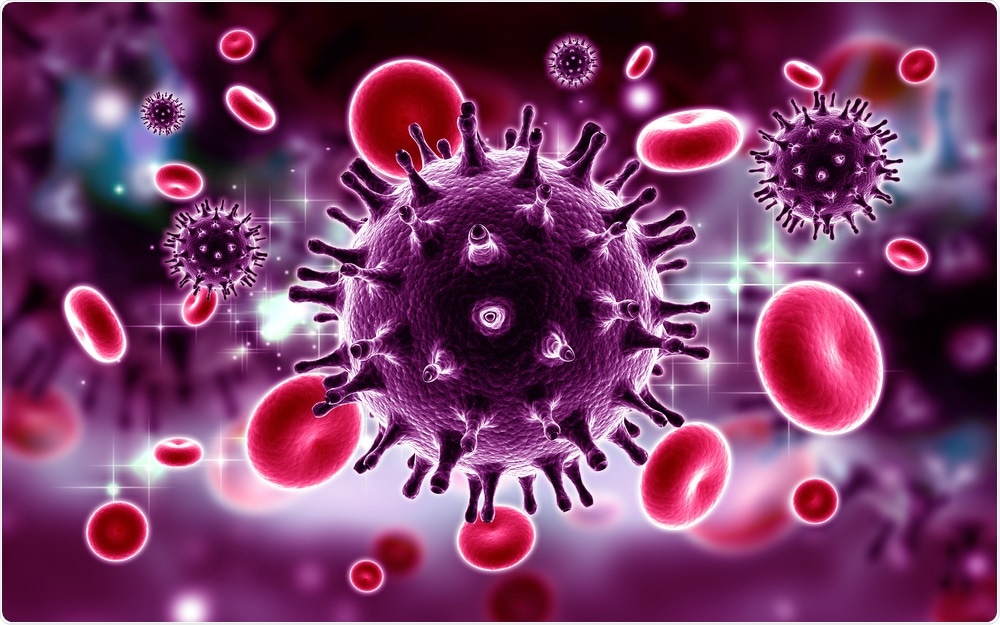HIV latency is considered one of the biggest challenges to developing a cure for the virus. Now, a team of researchers at Carolina, Emory University and Qura Therapeutics have established a new strategy that can tackle latent HIV, which may lead to the evolution of new therapies.

Image Credit: RajCreationzs/Shutterstock.com
This week, a groundbreaking paper has been published in the journal Nature, that describes how a team of Carolina based scientists has developed an approach that overcomes a major hurdle preventing the establishment of a cure for HIV. Currently, antiretroviral therapy is prescribed to those with HIV.
It has the impact of suppressing HIV levels in the blood. However, the virus continues to exist in latently infected resting CD4+ T cells. Presently, there are no therapies available to target these latently infected T cells, and the body’s own immune system cannot recognize them. The antiretroviral therapy must be taken continuously otherwise viral loads increase in the blood. The latent reservoir of infected T cells is thought of as being the major barrier to creating a cure.
The Strategy
A team of scientists has now developed a strategy to tackle this. The US-based team used a compound known as AZD5582 to activate latently infected CD4+ T cells, reversing the latency. The compound has also been shown to have very little or no toxicity, making it safe to use in the human body.
Researchers have been attempting to find a reliable way to coax these infected cells out of latency for several years. This study demonstrates for the very first time a method that can do just that.
The importance of reversing latency in HIV treatment is that it allows these cells to once again become visible to the immune system, enabling the body’s natural immune response to kick in and target and kill the virus-infected cells.
Previous Research
Previously, other researchers have focused on triggering the NF-kB pathway in CD4+ T cells to force them out of latency. However, studies showed that activation of this pathway required the activation of hundreds of genes, resulting in the approach being too toxic to be safe to use in humans.
AZD5582, on the other hand, does not trigger the non-canonical NF-kB pathway, and activates much fewer genes. Scientists are motivated by this as it makes the potential treatment much less toxic, offering a real possibility for developing an effective treatment that will be safe to use in living cells.
The Results
The scientists who were involved in the study state their enthusiasm over the results, claiming that what they have developed could potentially lead to a simple and reliable tool for tackling latent HIV, exposing it to the immune system to allow it to clear the infection. This is something that has yet to be achieved in HIV treatment.
The team have been working on this project for five years and believe they have seen much progress in a relatively short amount of time. The team will continue to work together to continue to make progress on what they have already accomplished, with them being enthusiastic that much more will be achieved in the coming years.
Next Steps
They’ve proved that HIV can be pulled out of its hiding places in the body, which the research has been able to replicate across different model systems. The next step will be exploring how this method can be developed into a cure for HIV.
Currently, Qura Therapeutics is aiming to create a similar compound to AZD5582, with the view to conduct trials in humans in 2021. Given that around 38 million are infected with the virus worldwide, and 1.1 in the US, these advances in HIV treatment have the potential to be life-changing for a significant number of people.
Journal reference:
Nixon, C.C., Mavigner, M., Sampey, G.C. et al. Systemic HIV and SIV latency reversal via non-canonical NF-κB signalling in vivo. Nature (2020). https://doi.org/10.1038/s41586-020-1951-3